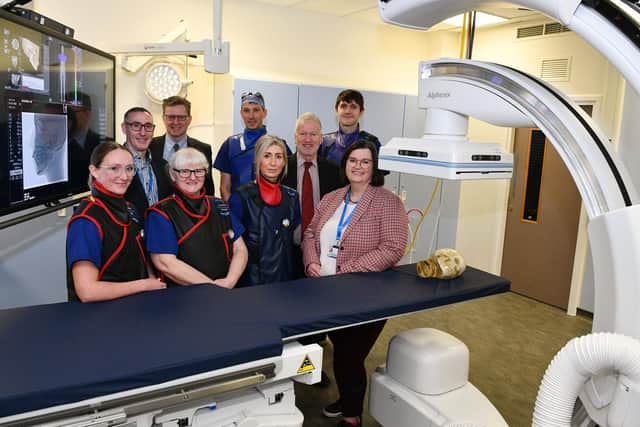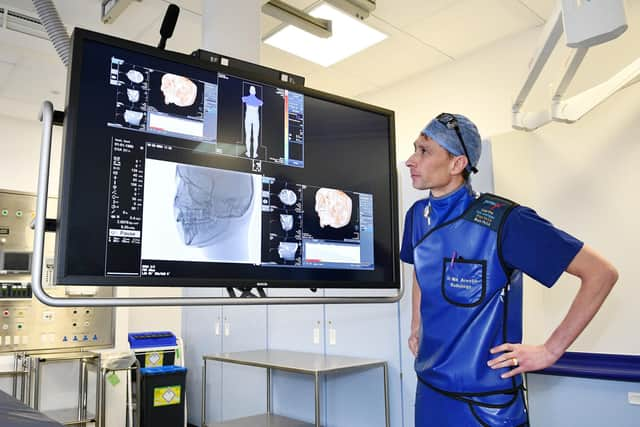NHS Forth Valley: £1m imaging machines will benefit patients
and live on Freeview channel 276
The digital machines work quicker, meaning less time in the radiology department for patients, while staff will be able to deal with more cases each day. Together they represent a £1 million investment by the health board.
High quality images and videos can be captured using contrast dye thanks to the new Ultimax machine.
Advertisement
Hide AdAdvertisement
Hide AdThis technology can be used to examine patients experiencing difficulties chewing and swallowing food, which can often happen after a stroke, and assess joints to identify if a patient would benefit from a hip or knee replacement. It can also be used to help position catheters and PICC lines (thin, flexible tubes which can be used to carry fluids in or out of the body, including antibiotics and chemotherapy drugs), and guide needles used to inject local anaesthetic into joints.


In addition, it can be used to insert stents to treat patients with a range of cancers, including bowel, stomach, gallbladder and liver cancer and supports a wide range of investigation carried out by the endoscopy department.
The Alphenix Sky+ system is the first of its kind to be installed in Scotland and has the unique ability to fully rotate from either side of the patient table and capturing images from every angle.
The machine is used to carry out a range of complex procedures and scans including inserting small metal coils into veins or arteries to cut off the blood supply to cancerous tumours and place stents which can then be expanded to help clear blockages and maintain blood flow.
Advertisement
Hide AdAdvertisement
Hide AdJennifer Gilchrist, NHS Forth Valley radiology services manager, said: “Technology has moved on significantly since the hospital opened and, although the previous radiology equipment has served us well, these new state-of-the-art machines provide clearer, high-quality images and the ability to carry out a range of more complex procedures which some patients had to travel to Glasgow for in the past.


“Advances in digital technology captures images far faster than older machines which enables us to image more patients each day and keep pace with increasing demand. This helps free up inpatient beds as the majority of patients can be treated and return home on the same day."